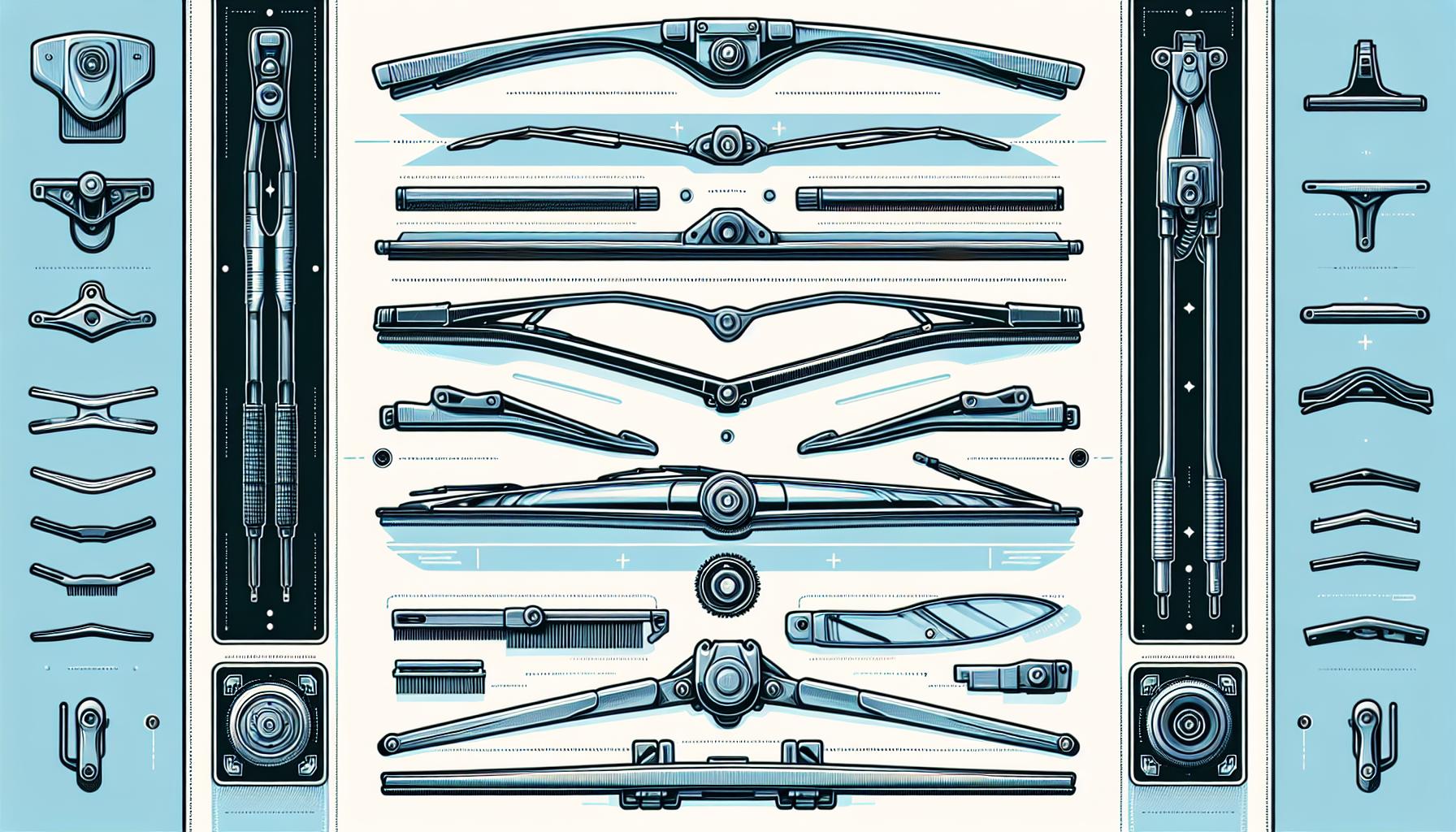Ever found yourself caught in a sudden downpour only to realize your windshield wipers aren’t doing their job? It’s a frustrating and potentially dangerous situation. Knowing how long windshield wipers last can save you from such predicaments and keep your visibility clear during adverse weather conditions.
I’ve often wondered about the lifespan of these essential car components myself. While many factors influence their longevity, understanding the general timeframe can help you plan timely replacements and maintain safe driving conditions. Let’s dive into how long you can expect your windshield wipers to last and what affects their durability.
Factors Influencing Windshield Wiper Lifespan
Windshield wiper lifespan varies based on several factors, impacting their performance and durability.
Material and Quality of Wipers
The material and quality of windshield wipers affect their longevity and efficiency. High-quality rubber or silicone wipers last longer compared to standard rubber. Premium brands often use durable materials that resist wear and tear, delivering consistent performance. For instance, silicone wipers typically perform better under extreme temperatures and offer enhanced durability.
Impact of Environmental Conditions
Environmental factors significantly influence how long windshield wipers last. Exposure to harsh weather conditions, like extreme heat, cold, and UV rays, degrades wipers faster. Areas with frequent rain, snow, or dust storms lead to more wear. For example, wipers in desert climates experience accelerated wear due to constant sun exposure and dust, whereas those in snowy regions endure strain from ice and snow buildup.
Frequency and Conditions of Use
The frequency and conditions under which windshield wipers are used play a crucial role in their lifespan. Wipers that clear heavy rain, snow, or debris often have shorter lifespans due to increased stress. Frequent usage during variable weather conditions leads to quicker degradation. Conversely, wipers used sporadically in mild climates typically last longer.
Signs of Wearing in Windshield Wipers

Recognizing the signs of worn windshield wipers ensures optimal driving visibility and safety. I’ll guide you through key indicators.
Visual Signs to Look Out For
Worn windshield wipers often show visible signs of deterioration. Cracks and splits may appear in the rubber blade, signaling it’s time for a replacement. Fraying or missing rubber sections also indicate wear. Additionally, blades lifting from the windshield during operation suggest reduced effectiveness. Watching for these visual cues helps maintain clear visibility.
Impact on Driving Visibility
Worn wipers directly impact driving visibility. Streaking occurs when blades can’t make full contact with the windshield, leaving water or debris behind. Chattering, the noise from wipers skipping over the glass, highlights uneven wear. A smearing effect reveals compromised blade quality, which can obscure your view and reduce reaction times. Identifying these visibility issues keeps you safer on the road.
Maintenance Tips to Extend Wiper Lifespan

Maintaining windshield wipers properly extends their lifespan and ensures optimal performance. Follow these tips to keep wipers in top condition.
Regular Cleaning and Inspection
Cleaning wipers regularly prevents dirt buildup. Use a cloth and mild detergent to wipe the blades. Inspect for cracks or wear. Replace if rubber shows signs of deterioration. Check wiper arms for proper alignment. Misaligned wipers cause uneven wear, reducing effectiveness.
Proper Storage and Care Techniques
Store wipers correctly to avoid damage. Lift blades off the windshield during icy conditions to prevent sticking. Avoid using wipers on a dry windshield. This action leads to faster wear. Use a windshield cover to protect wipers from prolonged sun exposure.
By following these simple yet effective maintenance tips, you’ll enhance the durability and performance of your windshield wipers.
Choosing the Right Windshield Wipers

Selecting appropriate windshield wipers is crucial for ensuring clear visibility, especially in adverse weather. Understanding the different types and selecting the right ones for various climates maximizes performance and longevity.
Types of Windshield Wipers
Understanding the types of wipers helps in making an informed choice. Below are the primary categories:
- Conventional Wipers: These have a metal frame that holds the rubber blade, ideal for general use but less effective in heavy snow.
- Beam Wipers: Made of a solid piece of rubber or silicone, these are more durable and effective in heavy rain and snow.
- Hybrid Wipers: Combine the durability of beam wipers with the aerodynamics of conventional wipers, suitable for all-season performance.
- Winter Wipers: Specifically designed for snowy conditions, featuring a rubber boot that prevents snow and ice buildup.
How to Select Wipers for Different Climates
Selecting the right wipers for your climate ensures optimal performance.
- Rainy Climates: Beam wipers provide excellent contact with the windshield, ideal for consistent rain.
- Snowy Climates: Winter wipers, with their protective boots, prevent ice accumulation, ensuring clear visibility.
- Dry Climates: Conventional or hybrid wipers suffice, but regular inspection prevents deterioration from UV exposure.
- Mixed Climates: Hybrid wipers offer versatility, performing well under various conditions without frequent replacements.
Matching your windshield wipers to your local climate reduces wear and tear, ensuring your wipers last longer and maintain optimal function.
Conclusion
Taking care of your windshield wipers is crucial for safe driving especially in bad weather. By understanding the factors that affect their lifespan and recognizing signs of wear you can ensure they’re replaced before they compromise your visibility. Regular maintenance like cleaning and proper storage can go a long way in extending their life.
Choosing the right wipers for your climate is equally important. Whether you opt for conventional beam hybrid or winter wipers make sure they’re suited for your local conditions. This not only enhances performance but also ensures that your wipers last longer.
Frequently Asked Questions
How often should windshield wipers be replaced?
Windshield wipers should generally be replaced every 6 to 12 months. However, lifespan can vary based on usage and weather conditions. Regular inspection for wear and tear is recommended to ensure optimal performance.
What are the signs that windshield wipers need to be replaced?
Common signs include streaking, skipping, splitting, or squeaking when in use. Visible cracks, fraying, or a compromised blade quality are also indicators that it’s time for a replacement.
How can I maintain my windshield wipers to last longer?
Regularly clean the blades with a damp cloth, inspect for signs of wear, and avoid using wipers on a dry windshield. Proper storage and care practices also help extend their lifespan.
What types of windshield wipers are available?
There are several types, including conventional, beam, hybrid, and winter wipers. Each type is designed for different weather conditions and vehicle compatibility.
How do I choose the right windshield wipers for my climate?
Select wipers based on your local climate conditions. For example, winter wipers are designed for heavy snow and ice, while beam blades are suitable for various weather scenarios due to their flexibility and durability.
What factors affect the lifespan of windshield wipers?
Factors include climate conditions, frequency of use, exposure to sunlight, and the quality of the blades. Regular maintenance can mitigate some of these factors, prolonging the wipers’ effectiveness.